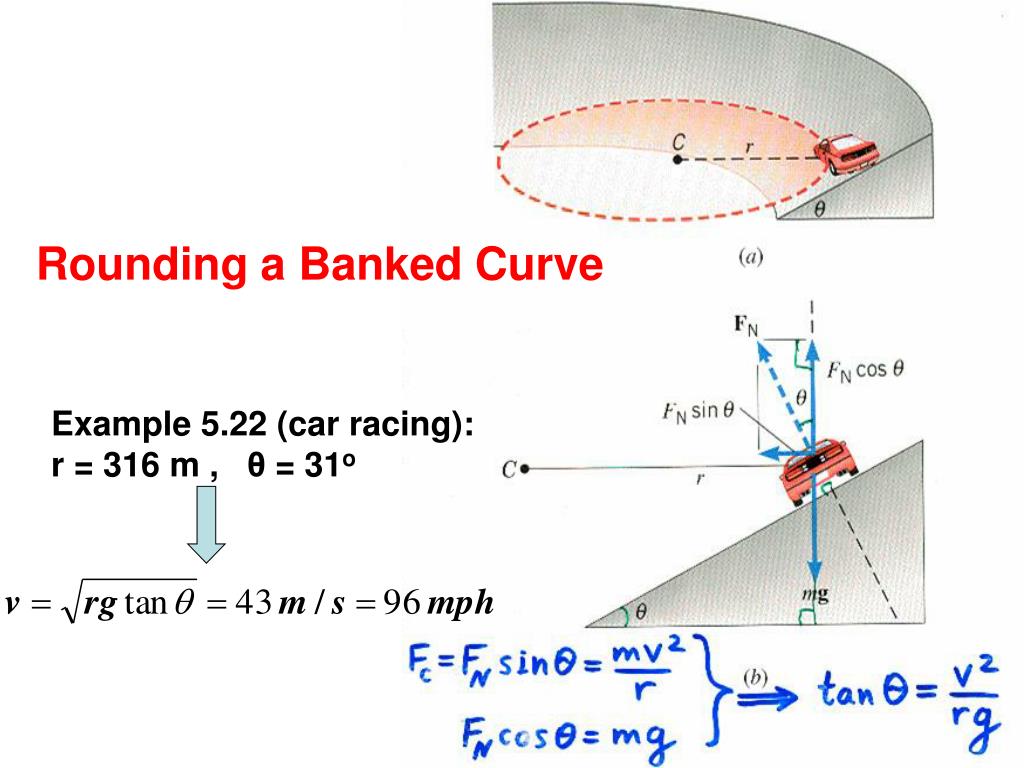

The equation for angular velocity is:įrequency tells us how far the object goes in one second (in terms of rotation about a circle). This gives the equation:Īngular velocity is a measure of the angular rotation per second. In circular motion, the distance is equal to the circumference of the circle –. We already know that speed is equal to distance over time. The frequency is the number of oscillations per second.
Centripetal force in relation to radians persecond full#
The period of a body in circular motion is the time taken for it to complete one full oscillation. Radians to degrees: multiply by and divide byĮxample: Convert into radians, and radians to degrees:.Degrees to radians: multiply by and divide by.If R were in inches, then this would avoid the many zeros.You can convert between degrees and radians using the following rules: This could be expressed as a formula.Īcceleration = 0.001118 x R x (RPM) 2 x (0.10472) 2 x 386.088 = 0.0047336 x R x (RPM) 2 inches/second/second with R in metres. I guess the correct answer to the OP is that his RCF formula is already in "customary USA units" because it is just a ratio and does not have any units until you multiply by a standardised acceleration due to gravity, which would be 32.174 feet/second/second x 12 inches/foot = 386.088 for inch units. My mistakes were to think the OP wanted to put inches radius into his RCF formula, which had R in metres (when what he really wanted was a formula for acceleration in inch/sec/sec - but he did ask what his RCF formula came from), & not read post #2 properly (it calculates "a" - without defining it as acceleration - & ends with a formula without writing in its units of inch/sec/sec).

(your post #8 is also wrong, replacing RPM by rad/second & leaving RPM to rad/s multiplier in place). I was wrong, converting acceleration m/s 2 to in/s 2 requires multiplying by 39.37. Why worry about the force? The OP wrote about "relative centrifugal force" and post #6 shows essentially same formula with "1118" from a centrifuge company as RCF = relative centrifugal force. To convert inches/sec^2 to "g", we do inches/sec^2 * 1 ft/12 inches * 1 g/32.2 ft/sec^2 Therefore, when meters are in in the numerator, you have to multiply by 39.37 to get inches. Not so, inches = meters*39.37 inches/1 meter. Anyway, a 1 kg of weight is the force of 1 kg at Earth gravity.į you want inches radius, you have to put inches/39.37 in place of R metres, which requires replacing 0.001118 by 0.001118/39.37 = 0.0000283 The OP did not give any mass, so why should we worry about the force. Ħ7model: (Use Copy & Paste to quote the original text.) Trying to get CR4 to deliver fact not error.

It seems to me, a lot of replies have taken post #2 as correct, which appears to multiply by 39.37, not divide by 39.37. G = 0.0000283*r*(RPM)*(R PM) where r is radius in inches If you want inches radius, you have to put inches/39.37 in place of R metres, which requires replacing 0.001118 by 0.001118/39.37 = 0.0000283 If you want kg weight per kg mass & call it G, the m is removed & there is the OP's formula However, if you want answer in kg weight per kg mass you have to divide by 9.81 to convert the Newtons (g= 9.81 m/s 2), so you have 0.0109662/9.81 = 0.0011178 or 0.001118 without haggling over value of g, which varies with location & whether your brain comes up with 32.2 or 9.81 as a standard. If you measure in RPM, you have to divide RPM by 60 to get rev/second. MRω 2 Newtons Ĭircumference of a circle is pi x diameter or 2*pi*R in terms of radius, angle per revolution = 2 x pi in radians.

The force on a point mass of m kg turning with radius R metres in a circular path about a point at angular velocity ω radians/second is.


 0 kommentar(er)
0 kommentar(er)
